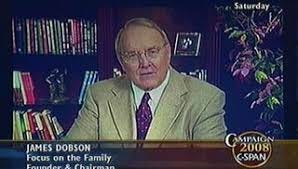Project 2025 and the Religious Right: The 90s
In a post-Reagan world, what does America look like?
This essay seeks to explain the rise of the Religious Right during the 1990s. Please subscribe below to receive the next posts about the Religious Right and post-Reagan, and our current Trump administration. You can view my sources at the end of the post. This is Part 3 in the series, you can view Part 1 here and Part 2 here.
George H. W. Bush inherited a White House and nation with a deficit of $2.8 trillion, largely due to tax cuts to the rich and increased military spending during the Reagan era. He served as Reagan’s Vice President and as a senator from Texas before he held the highest office in the land.
Bush, a New Englander born to Connecticut Senator Prescott Bush and who relocated to West Texas after college to get into the oil industry, was not nearly as religious-heavy as Reagan. Bush was Episcopalian, and was far more moderate in his religious language than his predecessor. However, the die was cast and the Heritage Foundation cemented itself as the most influential think tank in DC and continued to shape economic and foreign policy. Bush catered to the Reagan fan base. However ‘moderate’ Bush was prior to becoming vice president and president, he was now firmly right. He was guided by the Heritage Foundations’s updated policy handbook for the 1990s.
Bush spoke against the Civil Rights Act during his 1960s senate run, opposed gay marriage and took little action towards the HIV/AIDS epidemic. Prior to joining forces with Reagan and the Religious Right, he was moderate on abortion and supported Planned Parenthood, much like his wife, Barbara. To appease the Religious Right base, he changed his stance on abortion and made promises to pro-life leader, Jack Willke, that he would overturn Roe v. Wade. When he didn’t, it upset the Religious Right. Bush disagreed with Reagan’s trickle down policy, but by the time he was elected president, union power was effectively killed and jobs were sent overseas. After promising not to raise taxes, Bush wound up working with Democrats to increase taxes to attempt to lower the deficit. Little could be done to close Reagan/Pandora’s box of economic shittery. He signed the Americans with Disabilities Act to protect those with disabilities in the workplace, but also subsequently sent the National Guard to LA to push against the Rodney King riots.
The 1990s were a time of upswing for the evangelical Christians. After gaining serious momentum with Reagan, Christian culture was everywhere: 7th Heaven, Veggie Tales, Touched by an Angel. James Dobson worked to build the Focus on the Family empire out of Colorado Springs and buddying up with the US Air Force Academy.
This era also marked the Religious Right’s change of language. With major melanated celebrities such as Michael Jordan, Jennifer Lopez, Whitney Houston, etc., it was increasingly taboo to be so overt with racist language. The Religious Right focused on Roe v. Wade, divorce, LGBT rights, prayer in schools, and rebranded ‘creationism’ into ‘intelligent design’. They continued to push intelligent design in public schools.
President Clinton managed to salvage the economy, but signed the Defense Against Marriage Act which legally made gay marriage second-class to heterosexual marriage. He then signed the Don’t Ask, Don’t Tell (DADT), byname for the former official U.S. policy (1993–2011) regarding the service of homosexuals in the military and directive to the military personnel that they “don’t ask, don’t tell, don’t pursue, and don’t harass.” When it went into effect in 1993, the policy theoretically lifted a WW2-era ban on homosexual service.
The Religious Right also reused language from the early half of the 1900s regarding women in the workplace. By claiming women who worked were ‘spiritually inferior’, antagonistic to God’s will of gender roles, or emasculating men, the Religious Right laid heavy into working women. Ironically, Reagan’s fiscal policies are what caused unions to lose power in wage negotiation, sent jobs overseas, and created an economy where the dual-income household was a financial necessity. When Bush left office, the unemployment rate was 7.8% and 14% of Americans lived in poverty. Even if women didn’t want to work, the economic landscape meant that their household needed a second income.
Follow to get Part 4 delivered to your inbox.
Bibliography:
Guardian, https://www.theguardian.com/business/2018/dec/11/george-hw-bush-donald-trump-budget-deficit-taxes
Smithsonian, https://www.si.edu/spotlight/knowing-the-presidents-george-h-w-bush
BBC, https://www.bbc.co.uk/bitesize/guides/zmjwwnb/revision/5
NPR, https://www.npr.org/2017/04/26/524744989/when-la-erupted-in-anger-a-look-back-at-the-rodney-king-riots
CSPAN, https://www.c-span.org/person/james-dobson/14866/
Britannica, https://www.britannica.com/event/Dont-Ask-Dont-Tell







